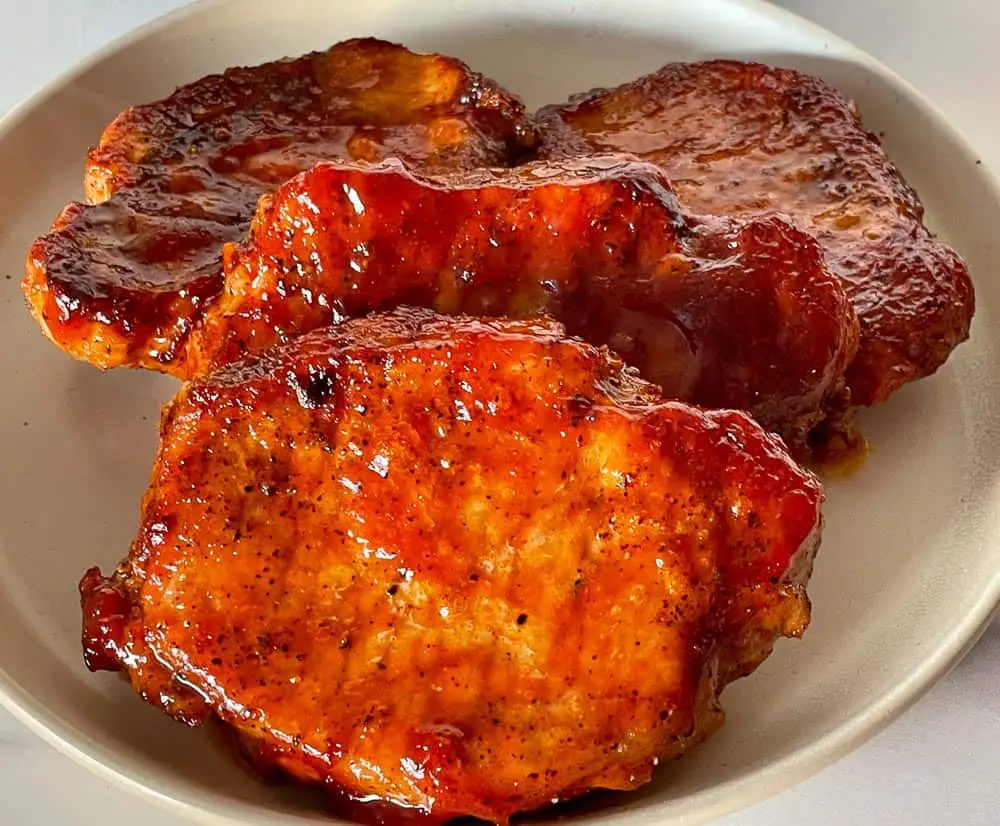Korean cuisine is renowned for its rich flavors, diverse ingredients, and the harmonious balance it achieves between different taste profiles. One of the most beloved and iconic dishes in Korean cuisine is Mandu, the delectable dumplings that have captured the hearts and taste buds of people around the world. Mandu comes in various forms, from steamed and boiled to pan-fried and deep-fried, and it can be filled with an array of savory ingredients. In this article, we will explore the history, cultural significance, and the art of making Mandu, complete with a step-by-step recipe to create these delicious Korean dumplings at home.
The History of Mandu
Mandu has a long and storied history that dates back centuries in Korea. The concept of dumplings is believed to have originated in ancient China, but it was quickly embraced and adapted by Koreans to suit their own tastes and culinary traditions. Mandu has evolved over time, reflecting changes in Korean society, culture, and ingredients.
Historically, Mandu was reserved for special occasions and feasts. They were often prepared during holidays, such as Lunar New Year and Chuseok (Korean Thanksgiving), and were considered a symbol of good fortune. The round shape of Mandu is thought to resemble ancient Korean currency, further emphasizing their association with prosperity.
Different Types of Mandu
Mandu can be categorized into various types based on their cooking methods and fillings. Here are some of the most popular types:
Gun Mandu (Boiled Dumplings): These are dumplings that are typically boiled in a savory broth. They have a delicate, tender texture, and the filling can vary widely, including combinations of ground pork, beef, tofu, vegetables, and kimchi.
Yaki Mandu (Pan-Fried Dumplings): Yaki Mandu are crispy on the outside and tender on the inside. They are pan-fried until golden brown, giving them a delightful crunch. The filling can be similar to Gun Mandu, with minced meat and vegetables.
Ttong Mandu (Steamed Dumplings): Ttong Mandu are steamed, resulting in a soft and slightly translucent wrapper. These dumplings often have a juicy filling, and popular variations include kimchi Mandu and kimchi pork Mandu.
Twigim Mandu (Deep-Fried Dumplings): These are deep-fried Mandu, and they are known for their extra crispy exterior. The filling can be the same as that of other Mandu types, but the frying process adds a unique texture.
Wang Mandu (King Dumplings): Wang Mandu are large, oversized dumplings that are often shared as a family or party dish. They can be filled with a variety of ingredients, including minced meat, vegetables, and glass noodles.
The Filling
The beauty of Mandu lies in its versatility. The filling can be customized to suit your preferences, and you can experiment with various combinations of ingredients. Here’s a basic recipe for a classic pork and vegetable filling:
Ingredients for Filling:
250g ground pork
1 cup finely chopped napa cabbage
1/2 cup chopped spring onions
1/4 cup chopped onion
2 cloves garlic, minced
1 tsp grated ginger
1 tsp soy sauce
1/2 tsp sesame oil
Salt and pepper to taste
Instructions for Filling:
In a large bowl, combine the ground pork, chopped napa cabbage, chopped spring onions, chopped onion, minced garlic, and grated ginger.
Add soy sauce, sesame oil, salt, and pepper to the mixture. Mix thoroughly until all ingredients are well combined.
Let the filling sit for about 15-20 minutes to allow the flavors to meld together.
The Wrapper
The wrapper of Mandu is traditionally made with a simple dough consisting of flour and water. However, you can also find pre-made dumpling wrappers in many stores, which can save you time and effort. If you decide to make your own wrapper, here’s a basic recipe:
Ingredients for Wrapper:
2 cups all-purpose flour
1/2 tsp salt
3/4 cup lukewarm water
Instructions for Wrapper:
In a mixing bowl, combine the flour and salt.
Gradually add lukewarm water to the mixture, stirring with a wooden spoon or your hands, until a dough forms.
Knead the dough on a floured surface for about 5-10 minutes until it becomes smooth and elastic. Cover it with a damp cloth and let it rest for 30 minutes.
Roll out the dough into a thin sheet and use a round cutter to create wrappers for your Mandu. You can make them as large or small as you prefer.
Assembling and Cooking Mandu
Now that you have your filling and wrappers ready, it’s time to assemble and cook the Mandu. Follow these steps:
Place a spoonful of the filling in the center of each wrapper.
Moisten the edges of the wrapper with a little water to help seal the dumpling.
Fold the wrapper in half, creating a half-moon shape. Press the edges together to seal, ensuring there are no air pockets.
If you want to get creative, you can pleat the edges for a more decorative appearance.
To cook Mandu, you have several options:
Boiling: Bring a pot of water to a boil, then add the Mandu. Cook for about 4-5 minutes or until they float to the surface.
Pan-Frying: Heat a pan with a bit of oil over medium-high heat. Place the Mandu in the pan and cook until the bottoms turn golden brown. Then, add a splash of water, cover, and steam for a few minutes to ensure the filling is fully cooked.
Steaming: Place Mandu on a steaming rack or steamer basket and steam for about 10-12 minutes.
Deep-Frying: Heat oil in a deep fryer or a deep pan to 350°F (175°C). Carefully lower Mandu into the hot oil and fry until they are golden brown and crispy, usually 3-4 minutes.
Dipping Sauces
Mandu is often served with a dipping sauce that complements the flavors of the dumplings. Two popular dipping sauces are:
Soy Sauce Dipping Sauce:
2 tbsp soy sauce
1 tbsp rice vinegar
1/2 tsp sugar
1/2 tsp minced garlic
1/2 tsp sesame oil
A pinch of red pepper flakes (optional)
Mix all the ingredients together in a small bowl.
Spicy Gochujang Dipping Sauce:
2 tbsp gochujang (Korean red pepper paste)
1 tbsp soy sauce
1 tbsp rice vinegar
1 tsp sugar
1/2 tsp minced garlic
1/2 tsp sesame oil
Combine all the ingredients in a small bowl and stir until well blended.
Cultural Significance
Mandu holds a special place in Korean culture, not only for its delicious taste but also for its symbolism and role in various traditions and celebrations.
Lunar New Year: Mandu is a traditional dish enjoyed during Lunar New Year in Korea. Families come together to make Mandu, and it is believed that the more Mandu you make and eat during this time, the more prosperous and fortunate your year will be.
Chuseok (Korean Thanksgiving): During Chuseok, Mandu is often prepared as part of the ancestral rituals known as Charye. Families offer Mandu to their ancestors as a way to show respect and gratitude.
Weddings: Mandu has also been a part of Korean wedding traditions. It is customary for the bride to make Mandu and serve them to her groom’s family as a symbol of her cooking skills and commitment to the family.
Street Food: In Korea, Mandu is a popular street food item. You can find vendors selling various types of Mandu at bustling markets and street corners. It’s a convenient and tasty snack enjoyed by people of all ages.
Mandu, the savory Korean dumplings, are more than just a delicious food; they are a reflection of Korean culture, tradition, and the art of crafting flavorful parcels of joy. Whether enjoyed as a hearty meal, a snack, or during festive occasions, Mandu has a special place in the hearts of Koreans and food enthusiasts around the world. By following the recipe provided in this article, you can embark on your own Mandu-making journey and experience the joy of creating and savoring these delectable Korean dumplings. So, gather your ingredients, roll up your sleeves, and let the aroma of Mandu fill your kitchen as you embark on a culinary adventure that celebrates the flavors and traditions of Korea.
Tips and Variations
As you embark on your Mandu-making journey, here are some additional tips and variations to help you create the perfect batch of dumplings:
Freezing Mandu: If you want to make a large batch of Mandu and save some for later, freezing is a great option. Arrange the uncooked Mandu on a baking sheet, making sure they don’t touch each other, and place them in the freezer until they’re firm. Then, transfer them to a freezer bag or airtight container. They can be cooked directly from the freezer; just add a few extra minutes to the cooking time.
Vegetarian/Vegan Mandu: You can easily adapt Mandu to suit vegetarian or vegan preferences by using plant-based fillings. Replace the meat with ingredients like tofu, mushrooms, or textured vegetable protein (TVP). Ensure your soy sauce is vegan-friendly, and you can enjoy delicious vegan Mandu.
Customized Fillings: Don’t be afraid to get creative with your Mandu fillings. Experiment with different combinations of ingredients to suit your taste. Some popular additions include shiitake mushrooms, glass noodles (dangmyeon), and various types of greens like spinach or kale.
Sealing Techniques: There are various ways to seal Mandu, and you can choose the one that works best for you. The simple half-moon shape is classic, but you can also try pleating the edges for a more intricate appearance. You’ll find many tutorials online demonstrating different folding techniques.
Dipping Sauces: Besides the traditional soy sauce and gochujang dipping sauces mentioned earlier, you can explore other dipping sauce options. Sweet chili sauce, hoisin sauce, or a combination of soy sauce, rice vinegar, and toasted sesame seeds are all excellent choices.
Dough Alternatives: While the classic Mandu wrapper is made from a simple flour and water dough, you can experiment with other types of wrappers. For a healthier option, use rice paper wrappers for a lighter, gluten-free alternative.
Spice Level: Adjust the spice level of your Mandu by adding more or less gochugaru (Korean red pepper flakes) to the filling. For a milder version, you can omit it altogether.
Mandu, the beloved Korean dumplings, are a culinary treasure that reflects the rich history, culture, and traditions of Korea. These flavorful parcels, whether steamed, boiled, pan-fried, or deep-fried, have transcended borders and become a global favorite. With a delicious filling of your choice, a simple yet satisfying wrapper, and a dipping sauce to complement your taste buds, Mandu offers endless possibilities for customization.
The act of making Mandu is not just about preparing a meal; it’s an opportunity to connect with Korean culture and traditions, share delicious food with loved ones, and create lasting memories. Whether you’re celebrating a special occasion, exploring a new cuisine, or simply craving a comforting snack, Mandu is a delightful choice that’s sure to leave you craving more.
So, roll up your sleeves, gather your ingredients, and embark on a culinary adventure that will introduce you to the art of Mandu-making. As you savor each bite, you’ll not only enjoy the exquisite flavors but also gain a deeper appreciation for the rich cultural heritage that these delectable Korean dumplings represent. From the first bite to the last, Mandu is an experience that will leave you longing for the next opportunity to indulge in its savory delights.


















